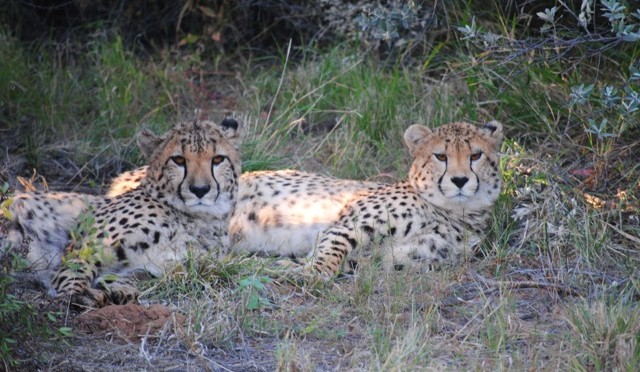As with the first day of our weeklong tour through Southern Namibia, our seven-day circuit through Northern Namibia began with an early start from the Wild Dog Safaris office in Windhoek. While our Southern Namibian travel group had been fairly small, with just five other people, the group for our northern trek included eleven additional travelers.1 After meeting up with our new guides, we were quickly on our way out of town, heading north from Windhoek on the B1 – Namibia’s main highway linking its southern border with South Africa to its northern border to Angola.
The first stop we made was in Okahandja, at one of Namibia’s largest artisanal craft markets. Although Katie and I were intrigued by many of the various wears on offer – which ranged from mobiles to jewelry to nearly life-sized giraffe woodcarvings – and chatted with a few of the vendors, we maintained our steadfast in our resolve to refrain from making any purchases. Given the length of our remaining travels, and the already oversized nature of our packs, picking up any handicrafts would not have been a viable option at this juncture.2
After a further stop at the grocery store to stock up on beer and wine,3 we were back on the road heading further north. Our first campsite of the week was located at Okonjima. Arriving around noon,4 we set up camp in what would turn out to be one of our favorite campsites. Although just as nice, it could not have been any more different from the patch of wifi-covered lawn at Lapa Lange that we had used as our campsite on the first night of our travels in Southern Namibia. Our large campsite at Okonjima had been craftily tucked into its own secluded area in the surrounding bush. A path on one side of our campsite led to a couple of open air toilets and a path on the other side led to a couple of open air showers – all were exclusive to our specific campsite and ingeniously situated to provide a necessary level of privacy while still being essentially outdoors.
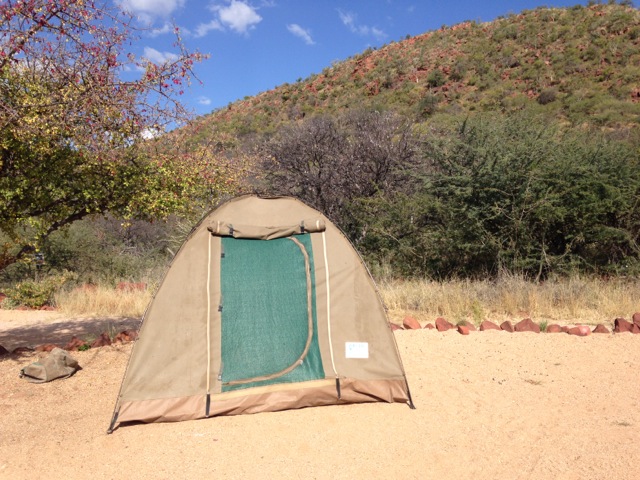
Okonjima was the first stop on our tour of Northern Namibia because it is located within a 200 square kilometer nature reserve that is home to the AfriCat Foundation – which runs a rehabilitation center for rescued and orphaned carnivores, primarily leopards, cheetahs, and lions. After a late lunch, our group was loaded into one of Okonjima’s large open-air safari vehicles and taken on a game drive through the reserve and on a tour of AfriCat’s facilities.
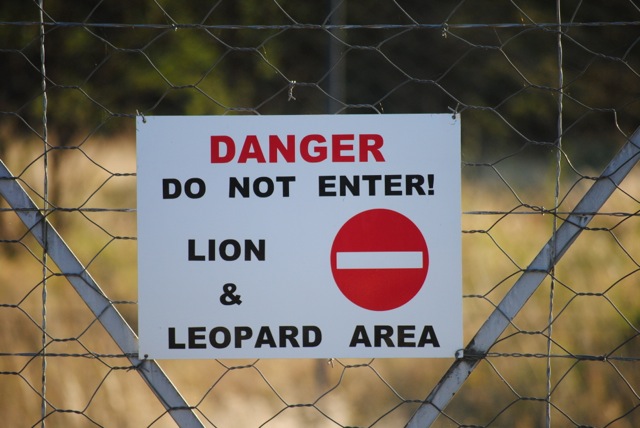
We spotted various animals along the drive; animals of particular note included a group of elands, a male kudu with some spectacular horns, a couple of lazy-looking jackals, and a warthog that amusingly appeared to mock charge our much larger safari vehicle.
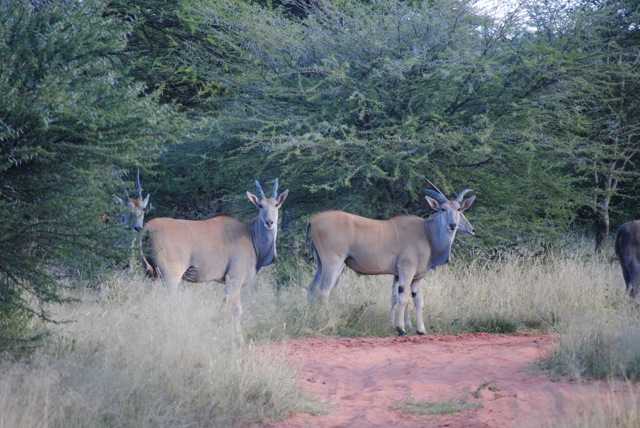
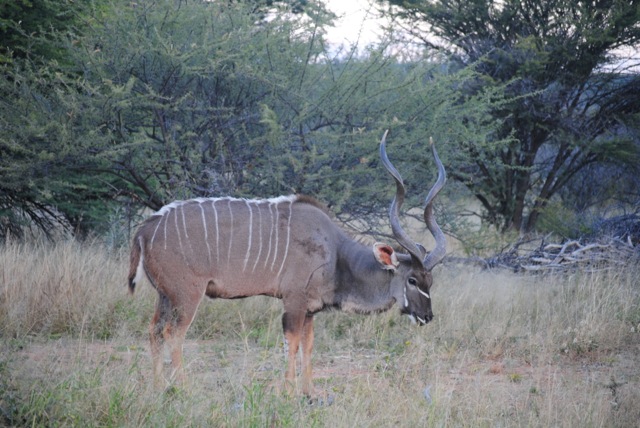
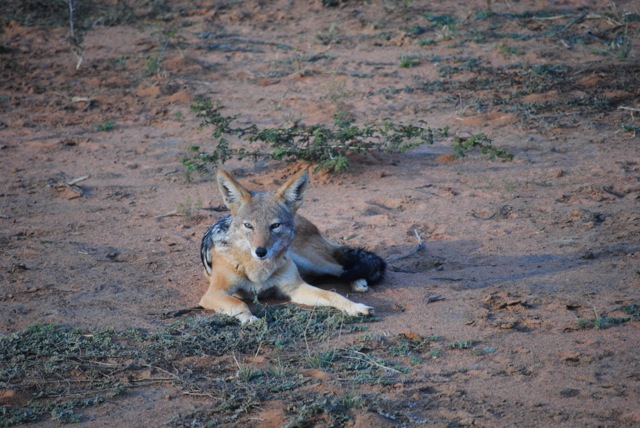
Along with conducting educational outreach programs with its surrounding communities, one of the AfriCat Foundation’s main goals is rescuing and caring for big cats that have been captured, and often orphaned, by farmers – who typically view the adult animals as a threat to their livestock. AfriCat works to rehabilitate these cats for release into the Okonjima preserve, and then whenever possible, ultimately to reintroduce them into safer areas in the wild. As part of this mission, AfriCat and the surrounding Okonjima preserve are home to a large number of carnivores in various stages of the rehabilitation process.
We went to visit a leopard named Wahu, who initially had come to live at AfriCat 16 years ago, after having been captured by a farmer as a week-old cub. Given the young age at which we had been rescued, he had to be hand-raised by humans and was unable to be reintroduced into the wild. After initially living in the home of one of the AfriCat founders, Wahu now lives in his own 12-acre enclosure and has taken on a role as AfriCat’s main ambassador for visiting groups.
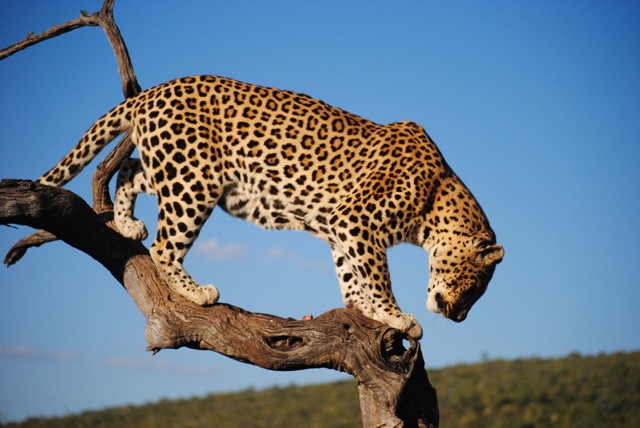
Our group was lead into a blind adjacent to his enclosure, from which we were able watch him being fed dinner – several hunks of donkey which had been placed in various locations for him to enjoy. Although we had the good fortune of witnessing a wild leopard stroll down the road past our car in Kruger National Park, it was amazing to get to watch Wahu up close for such an extended period of time.
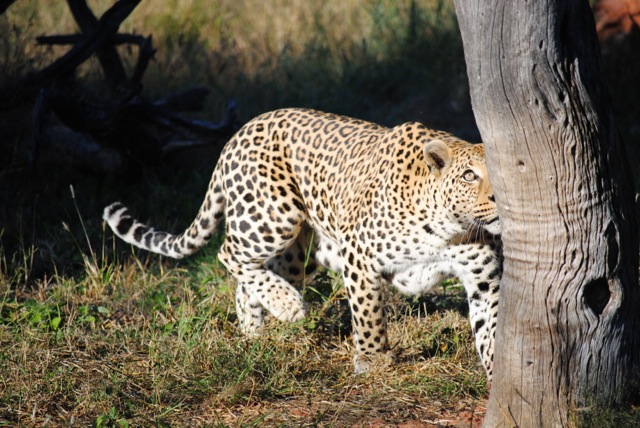
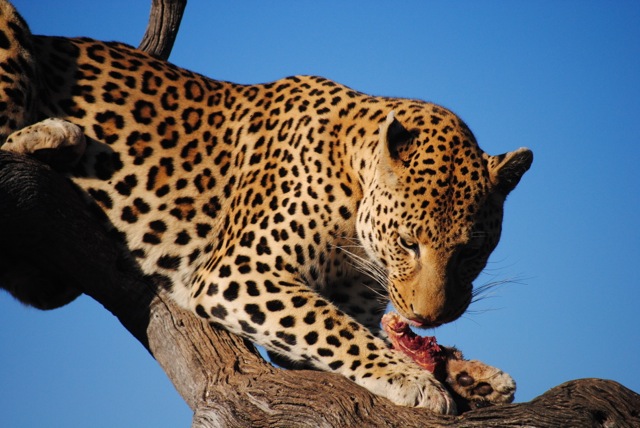
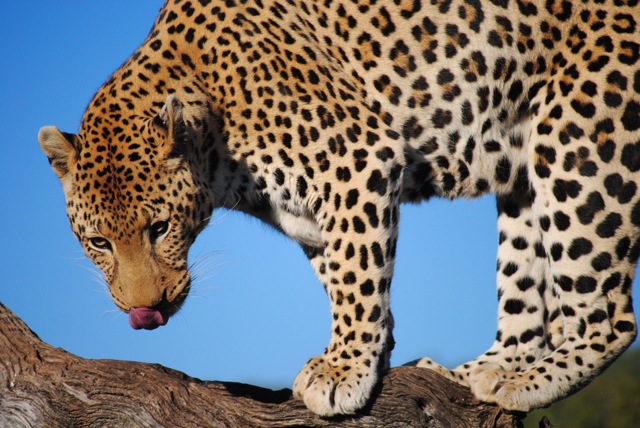
We then exited the blind and were loaded back into the safari vehicle to visit some of the cheetahs that were undergoing the process of being rehabilitated for eventual release into the wild. Each group of cheetahs at AfriCat lives in its own multi-acre enclosure and we drove around in one of the enclosures looking for a particular a group of four young sibling cheetahs. Eventually locating three of them resting under a bush, we stopped to watch, transfixed, as they lazed around, two of them occasionally popping their heads up to look inquisitively at us.
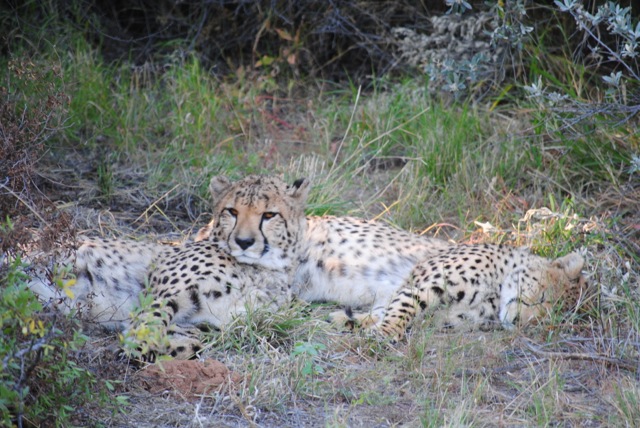
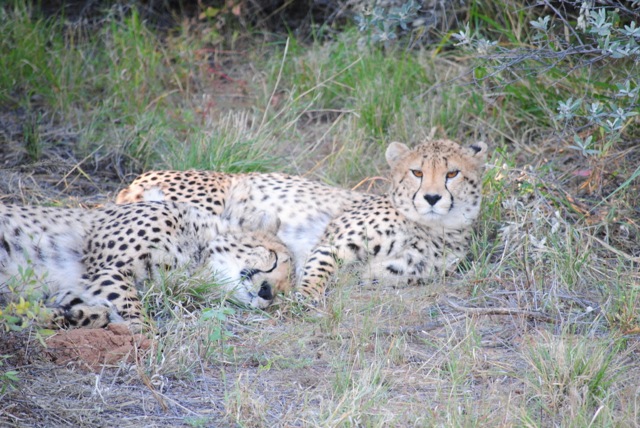
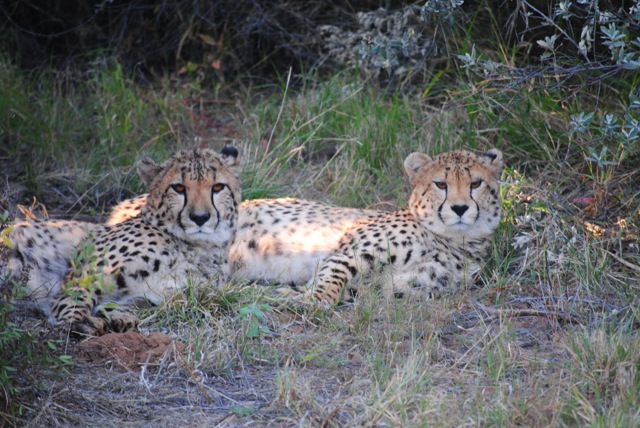
A group of lions were some of the newest arrivals at AfriCat. Having only been rescued a couple of months prior, however, they were not quite ready for primetime. Our guide explained that they had been kept away from visitors – and even much of the AfriCat staff – to allow them ample time to adjust to their new surroundings. Nonetheless, during our time in the cheetah enclosure, we could clearly hear the lions roaring – an unmistakable sound that can travel miles. Upon exiting the cheetah enclosure, and amusingly as our guide was contemporaneously trying to manage our expectations by explaining that it would still be months before visitors would be allowed to see the lions, we clearly spotted one of the large male lions standing at the edge of his enclosure, watching us as intently as we were seeking to observe him.
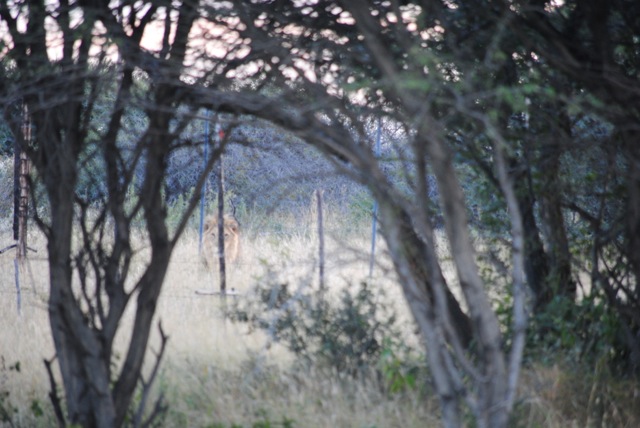
The final stop on our tour was at the AfriCat Foundation’s headquarters in the middle of the reserve. We learned about the outreach work that AfriCat does with various farming communities in Namibia, in seeking to educate them about ways to peacefully coexist with the big cats. We also got to see the clinic that AfriCat uses to examine the animals and learned about the various collars and other tracking methods it employs to keep tabs on the cats that have been released into the preserve.
1 Although this made for a more crowded ride on the Wild Dog truck, which was the same size as the one used for our Southern Namibia trip with a stated maximum occupancy of fifteen passengers, we enjoyed the diverse company of our travel companions. Traveling independently as a couple is a great way to spend quality time with your significant other, but an infusion of fresh conversation can be welcome after a couple of months on the road together.
2 Unburdened by such practicalities, however, some of the people we were traveling with picked up some really interesting pieces at very attractive prices.
3 It was here that Katie discovered her affinity for Leopard’s Leap Sauvignon Blanc. (As we later learned, a group of leopards is referred to as a “leap,” thus explaining the wordplay.) I was excited to finally track down a few bottles of Urbock – the Namibian stout I had been trying to locate during our Southern Namibian adventure – which turned out to be great.
4 Although we greatly enjoyed our travels through the beautiful landscape in Southern Namibia, one of the downsides of that portion of our trip was the vast distances that needed to be covered each day to enable us to make it to the various points on our itinerary. On more than one occasion, after driving several hundred kilometers and taking in an activity and roadside lunch along the way, we arrived at our campsite after the sun had already set and had to assemble our tents and set up camp in the dark. It was a refreshing change of pace to arrive at Okonjima so early.

